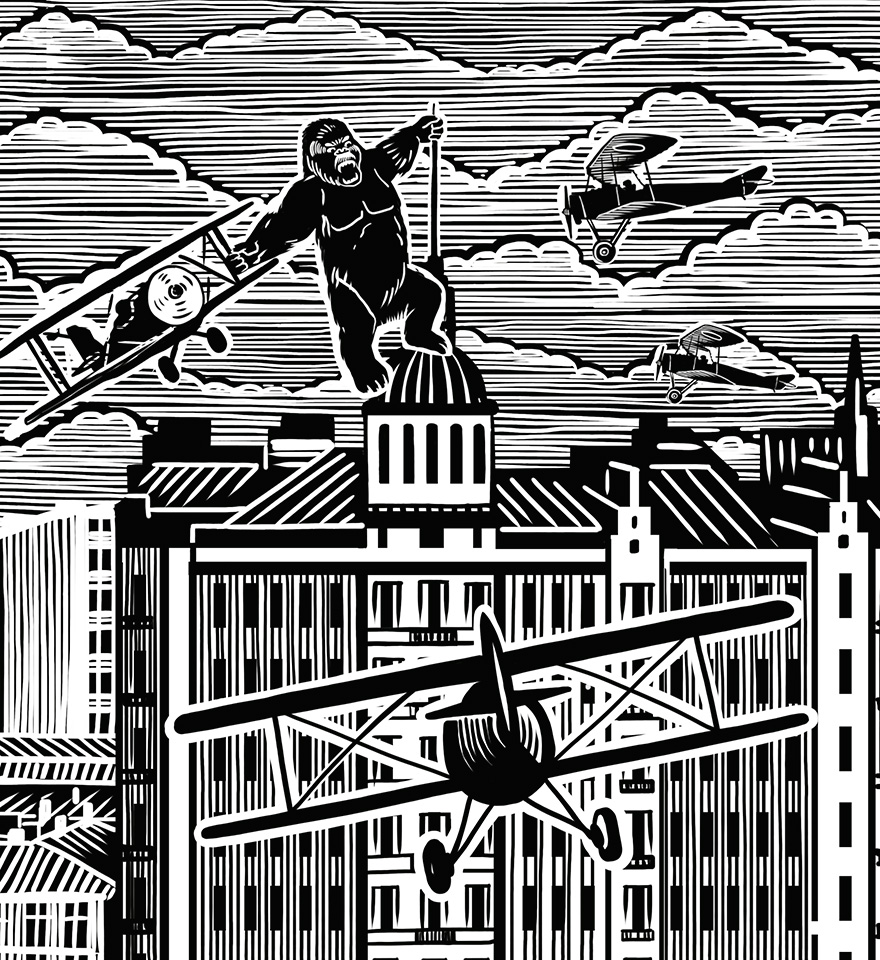TereshchenkoFedir
23 November 1888, Kyiv, Russian Empire (now Ukraine) —
30 January 1950, Paris, France
Aircraft plant
In the early twentieth century, it was difficult not to get interested in aviation. After the Wright brothers took to the skies in 1903, the newspapers only wrote about the new successes of the pilots. Sometimes the desire to learn to fly or assemble your own plane became so strong that the dream came true at the last expense. For example, one of the most famous pilots in the future, Jules Verdin, sold all his property to pay for training at the aviation school of Louis Bleriot, the pilot who first flew across the English Channel. After that, Verdin quickly returned the money when he began to participate in aviation competitions, and set record after record.

Fedir Tereshchenko, a student of the mechanical department of the Kyiv Polytechnic Institute, entered the same school in 1909. However, he did not have to sell the property. Tereshchenko came from a family of well-known sugar producers not only in the Russian Empire but also in Europe. In 1870 his father, also Fedir, and his uncle Nikola founded the Society of Sugar Beet and Refineries, and in 1878 at the World’s Fair in Paris he won the gold medal “For high quality refinery, granulated sugar and agricultural products”. In addition to several factories, the family also owned a large amount of land, collected works of art and invested in the construction of hospitals, museums and educational institutions.
Tereshchenko not only learned to fly an airplane, but also had bought a plane Bleriot XI, which was launched into a serial production, on which he made his legendary flight. In the same year, 1909, he met Volodymyr Hryhoriev at the Kyiv Aeronautical Society. Like Tereshchenko, Hryhoriev dreamed of creating his own aircraft, so the engineers decided to join forces. The place for the experiments was the village of Chervone, which housed the palace of the Tereshchenko family. Tereshchenko built airplane workshops on the territory of the palace, and turned the territory for cattle grazing into an airfield. In a few months, Tereshchenko and Hryhoriev built their first plane. It was based on the construction of the Bleriot XI, adding a number of improvements to the design. It was successfully presented at the aeronautical exhibition in Moscow.
Having money and experience to organize work in sugar factories, Tereshchenko approached seriously to the organization of work in workshops. The Central State Historical Archive has preserved information that during
In 1913, Tereshchenko workshops received the first military order for a device of their own design — “Tereshchenko № 5 bis”. In 1914 they already assembled 2 planes in a month. Some of the orders were Tereshchenko’s planes; some were collected, as it were under license. For example, “Farman-XXII”, “Moran-Solnier”, “Vuasen”, planes of French aircraft designers were popular among the military, and aircraft of these models were produced in workshops. Thanks to orders for aircraft and spare parts for them, the company began to make a profit.
In 1913, it was Fedir Tereshchenko who gave money to Igor Sikorsky, on which he built one of his legendary planes — “Illia Muromets”.
In addition to extra metal and woodworking machines, Tereshchenko purchased a stamping press and two welding machines. At that time they already employed 120 people, and in 1915 — there were 186. At the same time the workshop was renamed the aircraft factory.
By 1917, seven original aircrafts and several modifications had been assembled. At various times Tereshchenko invited designers: Dmitrii Hryhorovich, Sergii Zembinskii, French aviation engineer Alfred Pischoff and other talented inventors.
Although all the planes were named after Tereshchenko, today it is difficult for historians to determine the extent to which Tereshchenko as a designer participated in their design. Considering that he managed to turn a child’s dream into a profitable business, and workshops — in a whole factory, at some point he probably began to pay more attention to the management and financing of works than drawings and calculations. However, Tereshchenko’s letters have been preserved, and in one of them you can find: “I have invented and made new screws in shape, which give amazing results... I intend to distribute these screws”. It seems that Tereshchenko still managed to combine the work of manager and designer.
After the revolution of 1917, Tereshchenko’s estates and factories, including the airplane factory, were nationalized, and Tereshchenko moved to France. He was no longer involved in aircraft construction.